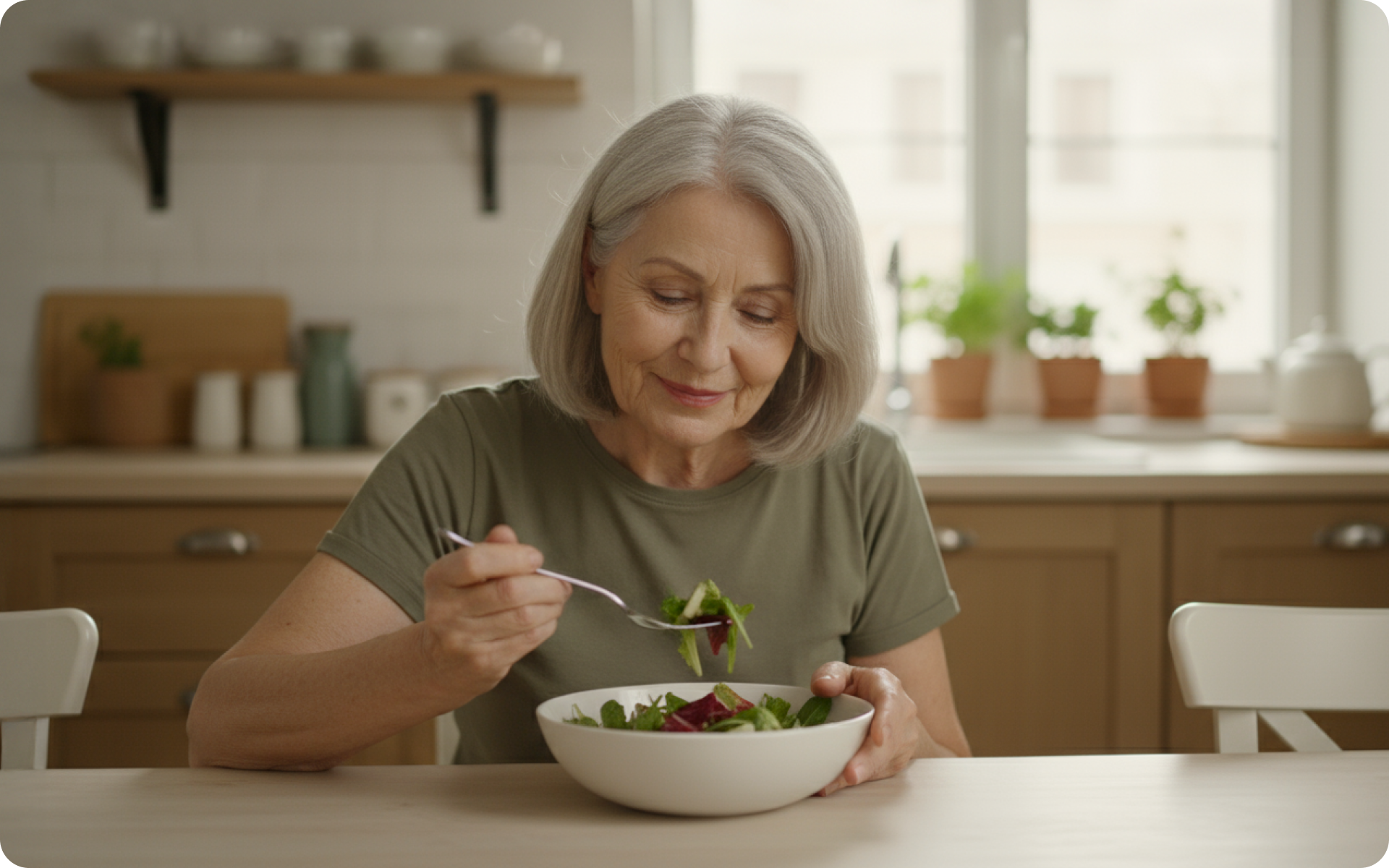Most popular snacks in stores contain a lot of salt. It improves taste, lengthens the shelf-life of the food, and functions as a stabilizer. To boost your heart health and lower blood pressure, you may want to go for low-sodium snacks. High sodium intake is a major contributor to cardiovascular disease, hypertension, and other chronic conditions. Snacks that are low in salt can be both tasty and filling. (1)
In this article, we’re going to take a look at evidence-based strategies to help you lower your intake of sodium. You can find different foods to add to your shopping list that can offer long-term benefits.
The Science Behind Low-Sodium Snacks
Your body needs salt. It helps regulate fluid levels, nerve health, muscle contraction, and the normal balance of minerals and water. You can find sodium naturally in all sorts of foods, from artichokes to eggs, dairy, and meat. Their sodium content varies widely. Your healthcare provider may suggest you include more low-sodium snacks if you have hypertension, an increased risk of heart disease, or kidney problems.
However, doctors can also recommend you reduce your salt intake if you have edema or a high risk of osteoporosis. This is because too much salt can weaken the bones. It can cause calcium loss, which could lead to lower bone mineral density. (2)
The problem is that an average person eats around 3,400 mg of salt every day, but the recommended intake for adults is less than 2,300 mg a day. Low-sodium, low-carb snacks can satisfy the cravings between meals and supply the body with nutrients. They’re naturally low in sodium and often rich in potassium, magnesium, or calcium. (3)
How to Read the Label when Buying Snacks
Are you looking for low-sodium snacks to buy but don’t know where to start? Check the nutrition label. When you have to cut back on salt, aim for 200 mg of sodium or less per snack, and 600 mg or less per meal. You can also look for snacks with 5% daily value (DV) for sodium or less per serving.
Snacks with “no salt added” or “low sodium” can be a good choice. However, the ideal options are fresh foods or snacks that you prepare at home.
Here’s another tip you can use when reading the labels. The table below contains popular terms relating to sodium/salt. Each term tells you exactly what it means for the product you want to buy.
| Nutrition label | Sodium per serving |
|---|---|
| Salt/sodium-free | The product has < 5 mg. |
| Very low sodium | 5 mg – 35 mg |
| Low sodium | 36 mg – 140 mg |
| Reduced sodium | At least 25% less sodium compared to a standard food product. |
| Lightly salted | At least 50% less sodium compared to a standard food product. |
| No salt added or unsalted | No sodium added to the product. However, the product may still naturally contain sodium. |
Now, you’re probably wondering whether vegetable chips are healthy. Could they be just as bad as regular potato chips? When the vegetables get processed into chips, a lot of the beneficial nutrients are stripped, so you still end up with food that is high in fat, sodium, and calories. The contents can be very similar to regular potato chips.
BetterMe App helps you achieve your body goals with ease and efficiency by helping to choose proper meal plans and effective workouts. Start using our app and you will see good results in a short time.
What Snack Foods Are Low in Sodium?
Low-sodium snacks can be defined as those that provide less than 200 mg of sodium per serving. However, whenever you choose a snack, you must think about the serving size. Many companies are making their serving sizes very small in order to claim they are low in sodium.
For example, the serving size may be 10 chips, but no one really eats just 10 chips and will consume many more to satisfy their craving. So this low-sodium snack then becomes a high-sodium food very quickly. What you need is a filling snack that is teeming with nutrients, vitamins, and minerals. The list below can help:
-
Popcorn That You Make Yourself
Commercially made popcorn usually has a lot of added salt, sugar, and sometimes unhealthy fats, preservatives, and food colorings. When you make it at home, you can control the ingredients. Try seasoning your popcorn with parmesan cheese, paprika, or garlic powder. If you want a more plain taste, you can enjoy air-popped popcorn.
-
Nut Butter on Low-Carb Whole-Grain Toast
Many nut butters such as peanut butter, pecan butter, almond butter, and cashew butter can be great for snacking. The unsalted varieties are full of protein, healthy fats, and essential nutrients. When you spread them on whole-grain toast, you get a high-fiber snack.
Research has suggested that consuming nuts can protect the body from coronary heart disease. It can also reduce the risk of diabetes and gallstone disease. Nut butters contain a good amount of phytochemicals that could offer protective qualities against prostate, colon, and breast cancer. (4)
-
Plain Unsalted Nuts
Plain nuts can help you lose weight, even if they’re high in calories. As these salt-free snacks are packed with dietary fiber and proteins, they increase satiety. The dietary fiber in nuts promotes a healthy gut microbiome, delays gastric emptying, and suppresses hunger. (5)
You can enjoy a blend of almonds, pecans, hazelnuts, cashews, and pistachios. These mixed nuts have exceptionally nutritious values.
-
Raw Vegetables with Yogurt Dips
Raw vegetables make excellent low-sodium snacks for heart patients. You can eat them plain or enjoy them with a yogurt-based dip.
These vegetables have flavor and can keep you feeling full for longer:
- Celery
- Bell peppers
- Carrots
- Cabbage
- Cucumbers
- Broccoli
Skyr, for example, is a popular yogurt-type product in a Nordic Diet. It’s a rich source of calcium, potassium, and protein and goes well with almost any vegetable.
Read more: Kale Chips Keto Recipes: 3 Recipes and 12 Seasonings for Keto-Friendly Snacks
-
Hard-Boiled Eggs
Hard-boiled eggs make a perfect low-sodium snack for kids. You can season them with herbs and spices, such as paprika, cumin, oregano, or rosemary. If you need something fresh, you can squeeze some lime or lemon juice over them.
Both fresh garlic and garlic powder add depth and flavor. However, to really make the snack stand out, you may want to top it with sliced or mashed avocado, then sprinkle some parsley on top.
-
Baked Kale Chips
If you’re looking for low-sodium snack recipes, kale chips are an excellent choice.
Kale is a great source of carotenoids such as α-carotene, β-carotene, and lutein. It contains more β-carotene than Brussels sprouts, cabbage, broccoli, and cauliflower. It has potent immune boosting and antioxidant activities. (6)
To make the chips, you first need to wash and dry the kale. Then, remove the stems and tear the leaves into smaller pieces. Bake at a low temperature until you get a crispy surface. For extra flavor, here are some seasonings you can try:
- Garlic powder
- Chili powder
- Cinnamon
- Cumin
- Black pepper
- Hot sauce
- Cayenne pepper
What Foods Are Surprisingly Low in Sodium?
Sodium content greatly varies from product to product. Ultra-processed foods often contain a lot of salt and may have hidden sodium in ingredients such as sodium benzoate, monosodium glutamate (MSG), and baking soda. To minimize your intake, try to cut back on instant noodles, frozen dinners, and processed meats. Here, we’ve selected some low-sodium snacks to buy that can mitigate salt intake.
-
Chocolate Hazelnut Spread with Crackers
If you’re craving something sweet, you can enjoy low-sodium crackers with organic hazelnut cacao spread. This wholesome treat has a smooth and creamy texture that’s perfect for anyone who has a sweet tooth.
-
Sweet Potato and Beet Chips
Sweet potatoes are abundant in antioxidants and fiber. They also contain potassium, which could help with electrolyte imbalance. When combined with beets, sweet potatoes make an excellent snack.
You can cook them in your air fryer or bake them in your oven until crisp. They’re full of flavor and can help you manage your salt intake. They can fit into a low-sodium diet and are also high in potassium and calcium, while being low in sodium as long as you don’t add too much salt.
-
Spicy Pumpkin Roasted Seeds
Pumpkin seeds have a plethora of benefits. They’re a nutritional powerhouse with anti-inflammatory, antimicrobial, antioxidative, and wound-healing properties. This makes them excellent low-sodium snacks.
Research has suggested that they may improve spermatogenesis and help treat BPH (benign prostatic hyperplasia). They contain iron, zinc, and magnesium, which makes them a worthy choice for supporting the immune system. (7)
Roasted spicy pumpkin seeds are a good source of healthy fat and protein. They have the right amount of seasoning to prevent you from eating an entire bag in one sitting, but enough to satisfy your cravings for low-sodium snacks.
-
Peanut Butter and Dark Chocolate
The salt content in natural peanut butter can vary from product to product, but it generally contains less salt than regular peanut butter. Based on studies, eating peanuts can help reduce triglyceride blood levels and improve lipid metabolism. (8)
Dark chocolate can be equally healthy. Reports have indicated that dark chocolate has antimicrobial, anti-inflammatory, and anti-diabetic compounds. It may be a satisfying sweet snack for those who are looking to curb the extra pounds and stabilize their lipid profile. (9)
When you combine peanut butter and dark chocolate, you create a nutritious and filling chocolate bar.
If you wish to free yourself from all the extra pounds that have been weighting you down for way too long, start using the BetterMe app and overhaul your entire life!
What Foods Are Best for a Low-Sodium Diet?
The same basic nutrient-dense foods should make up anyone’s diet: fruits and vegetables, whole grains, beans and legumes, lean proteins (lean meats, poultry, fish, and plant-based proteins), healthy fats (seeds and nuts, vegetable oils, avocado), and dairy products. These should all be included in a balanced low-sodium diet. It’s important to remember not to add too much salt when cooking and, more importantly, to limit ultra-processed, fast, and restaurant foods that tend to be high in sodium.
What Kind of Sandwich Can I Eat for Low-Sodium?
Sandwiches make up a big portion of British and American diets. They’re a staple in many households and a popular choice for lunch at work. However, many sandwiches are also packed with salt and carbohydrates. They often account for 1/5 of a person’s total daily sodium intake.
Here’s how you can reduce the salt intake in sandwiches:
- Replace deli meats with fresh-cooked chicken, turkey, pork, or beef. Don’t use sausages, salami, bacon, or other pre-sliced meats as they tend to be high in sodium.
- Avoid or reduce the amount of spreads or condiments, or choose those that are low in sodium.
- Instead of pickles or pickled vegetables, use fresh sliced tomatoes, lettuce, bell peppers, or other vegetables.
- Choose natural cheese (i.e. mozzarella, cheddar, or Swiss) instead of processed cheese.
Read more: 12 Pumpkin Keto Recipes for Savory and Sweet Treats, Meals, and Snacks
FAQs
What are the worst foods to eat on a low-sodium diet?
Ultra-processed foods are the biggest contributors of sodium to our diets. To limit the amount of salt you eat, you should limit or avoid fast food meals, pre-packaged dinners, processed or deli meats, processed cheese products, readymade gravies and sauces, salty condiments, and high amounts of dressings. Almost all canned foods are high in sodium, but you can read labels to find those that are lowest.
Do bananas flush out sodium?
As many people eat too much sodium and not enough potassium, your doctor may suggest that you eat more bananas. This isn’t because the bananas directly remove the sodium from your system, but because they’re rich in potassium. In other words, this mineral can help balance out the sodium levels in your body. Most fruits and vegetables are rich in potassium.
How can I flush sodium out of my system fast?
Talk to your doctor if you have kidney or heart problems or other medical conditions that may affect your fluid and electrolyte balance. If you’re a healthy person who has eaten a salty meal, your body will take care of the excess sodium on its own. The best thing to do is drink plenty of water, while sweating and urinating naturally help remove sodium. The more intensely you sweat, the quicker you will lose more salt. Make sure you drink plenty of water if you’re sweating because you’ll be losing fluids too.
What can I eat to lower my sodium intake?
Ultra-processed, fast, and restaurant foods are among the biggest contributors of sodium in our diets. The surest way to lower your sodium intake is to prepare more of your meals yourself, starting with whole foods, so you control how much salt is added. When you eat out, ask the restaurant for nutritional information and read the labels of packaged foods to identify those with lower amounts of sodium.
The Bottom Line
Snacking can be useful and support weight loss if you do it right. However, there are always snacks you least suspect contain salt, such as low-sodium chips. The trick is to learn to read the labels and not to underestimate the seasonings. By making snacks at home, you will have complete control over how much salt you use. In this way, you can manage your hunger and boost your overall nutrition.
We’ve chosen the snacks listed here because they’re easy to make and find. They don’t require any cooking experience or expensive ingredients. Every snack is highly nutritious and tasty. If you have any specific dietary requirements, make sure to consult your dietitian or physician.
DISCLAIMER:
This article is intended for general informational purposes only and does not serve to address individual circumstances. It is not a substitute for professional advice or help and should not be relied on for making any kind of decision-making. Any action taken as a direct or indirect result of the information in this article is entirely at your own risk and is your sole responsibility.
BetterMe, its content staff, and its medical advisors accept no responsibility for inaccuracies, errors, misstatements, inconsistencies, or omissions and specifically disclaim any liability, loss or risk, personal, professional or otherwise, which may be incurred as a consequence, directly or indirectly, of the use and/or application of any content.
You should always seek the advice of your physician or other qualified health provider with any questions you may have regarding a medical condition or your specific situation. Never disregard professional medical advice or delay seeking it because of BetterMe content. If you suspect or think you may have a medical emergency, call your doctor.
SOURCES:
- Sodium reduction (2023, who.int)
- Sodium Intake and Osteoporosis. Findings From the Women’s Health Initiative (2016, ncbi.nlm.nih.gov)
- Sodium in Your Diet (2024, fda.gov)
- Plant based butters (2015, ncbi.nlm.nih.gov)
- Nuts, Energy Balance and Body Weight (2023, ncbi.nlm.nih.gov)
- Improving the Health-Benefits of Kales (Brassica oleracea L. var. acephala DC) through the Application of Controlled Abiotic Stresses: A Review (2021, ncbi.nlm.nih.gov)
- Nutritional Value, Phytochemical Potential, and Therapeutic Benefits of Pumpkin (Cucurbita sp.) (2022, ncbi.nlm.nih.gov)
- Effect of Peanut Consumption on Cardiovascular Risk Factors: A Randomized Clinical Trial and Meta-Analysis (2022, ncbi.nlm.nih.gov)
- Dark chocolate: An overview of its biological activity, processing, and fortification approaches (2022, ncbi.nlm.nih.gov)










